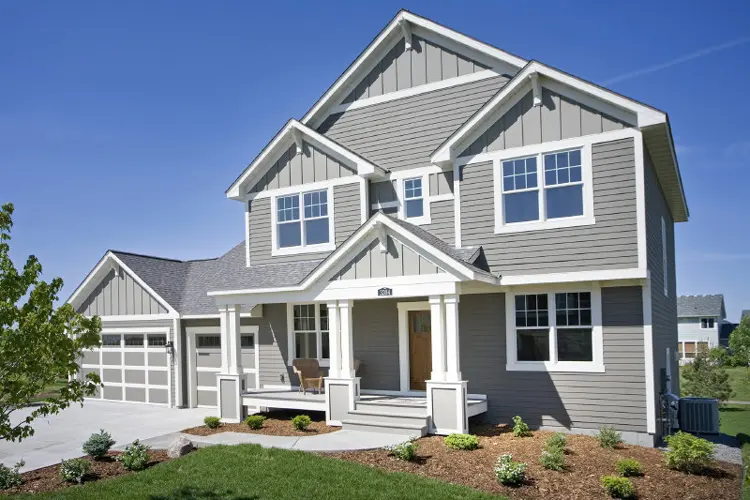Replacing the siding on your home is a significant investment that can dramatically improve its appearance and increase its value. However, understanding the cost of siding replacement can be complex, as it depends on various factors, including the type of material, labor, and the size of your home. This article aims to provide a comprehensive guide to help you understand the costs involved in siding replacement.
Factors Influencing Siding Replacement Costs
1. Type of Siding Material
The choice of siding material is the most significant factor affecting the overall cost. Here are some popular siding materials and their average costs per square foot:
- Vinyl Siding: $2 – $7 per square foot. Vinyl is a popular and cost-effective option that offers a wide range of colors and styles. It is low-maintenance and durable, making it a favorite for many homeowners.
- Fiber Cement Siding: $5 – $14 per square foot. This material mimics the look of wood but is more durable and resistant to termites and rot. It requires painting but has a long lifespan.
- Wood Siding: $5 – $10 per square foot. Wood offers a classic and natural look but requires more maintenance and can be susceptible to pests and moisture damage.
- Engineered Wood Siding: $4 – $9 per square foot. Engineered wood provides the appearance of wood with added durability and lower maintenance.
- Stucco Siding: $6 – $9 per square foot. Stucco is a durable option that provides excellent insulation but can be more expensive to install and repair.
- Brick Siding: $8 – $18 per square foot. Brick is a long-lasting and low-maintenance option, though it is among the more expensive materials.
- Stone Veneer Siding: $10 – $25 per square foot. Stone veneer offers a luxurious look and durability but comes at a higher cost.
2. Labor Costs
Labor costs vary based on the complexity of the job, the region, and the contractor’s experience. On average, labor costs can range from $1 to $7 per square foot. More intricate installations, such as those involving custom designs or challenging layouts, can increase labor costs.
3. Home Size and Design
The size and design of your home also significantly impact the cost of siding replacement. Larger homes require more materials and labor, leading to higher costs. Additionally, homes with multiple stories, complex architectural features, or extensive trim work may incur higher costs due to the increased time and effort required for installation.
4. Preparation and Removal
Before installing new siding, the old siding must be removed, and the underlying structure prepared. This process can add to the overall cost, especially if there is damage to the existing siding or if repairs to the underlying structure are needed. On average, the cost of removing old siding can range from $0.50 to $2 per square foot.
5. Insulation and Additional Features
Adding insulation or other features, such as house wrap, can increase the cost but provide long-term energy savings and improved home comfort. The cost of adding insulation can range from $1 to $3 per square foot.
Average Total Costs
Considering all these factors, the average total cost of siding replacement for a typical 1,500-square-foot home can range from $5,000 to $15,000. Here’s a breakdown of potential costs based on different materials:
- Vinyl Siding: $4,000 – $10,500
- Fiber Cement Siding: $7,500 – $21,000
- Wood Siding: $7,500 – $15,000
- Engineered Wood Siding: $6,000 – $13,500
- Stucco Siding: $9,000 – $13,500
- Brick Siding: $12,000 – $27,000
- Stone Veneer Siding: $15,000 – $37,500
Tips for Reducing Siding Replacement Costs
- Compare Quotes: Obtain multiple quotes from reputable contractors to ensure you’re getting a fair price. Be sure to compare the scope of work, materials, and warranties offered.
- Choose Off-Season: Scheduling your siding replacement during the off-season can sometimes result in lower labor costs, as contractors may offer discounts to keep their crews busy.
- DIY Partial Work: If you have the skills, consider doing some of the preparation work yourself, such as removing old siding or painting. However, be cautious with DIY installation, as improper installation can lead to costly repairs down the line.
- Select Affordable Materials: While high-end materials have their benefits, more affordable options like vinyl or engineered wood can provide good durability and aesthetics at a lower cost.
- Negotiate: Don’t hesitate to negotiate with contractors. Sometimes, they can offer discounts or suggest cost-saving alternatives.
Conclusion
Siding replacement is a significant investment, but it can enhance your home’s appearance, energy efficiency, and value. By understanding the various factors that influence the cost, you can make informed decisions and budget appropriately for your project. Whether you choose vinyl, fiber cement, wood, or another material, be sure to select a reputable contractor and consider ways to optimize your investment.
